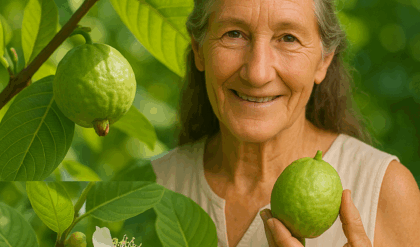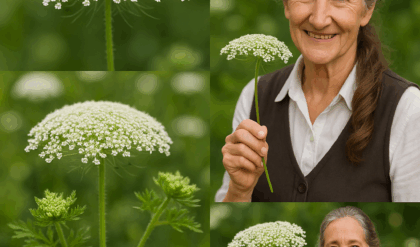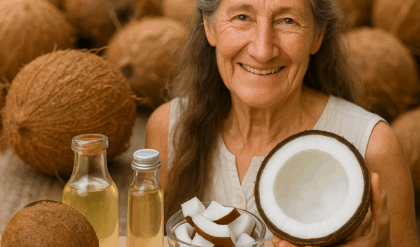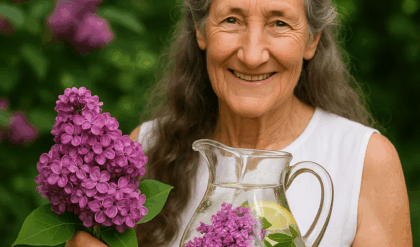🌸 Imagine harvesting the world’s most expensive spice right from your patio, even in chilly winters! Saffron, derived from the vibrant red stigmas of the *Crocus sativus* flower, is a luxurious addition to any kitchen, and growing it in containers is easier than you think—yes, even in cold climates. With its delicate purple blooms and potent flavor, this fall-flowering crocus can thrive in pots, offering a rewarding gardening experience. Ready to cultivate your own “red gold”? This comprehensive guide covers everything you need to grow saffron in containers, from planting to harvesting, tailored for cold climates (USDA Zones 3–5) where winters demand extra care.
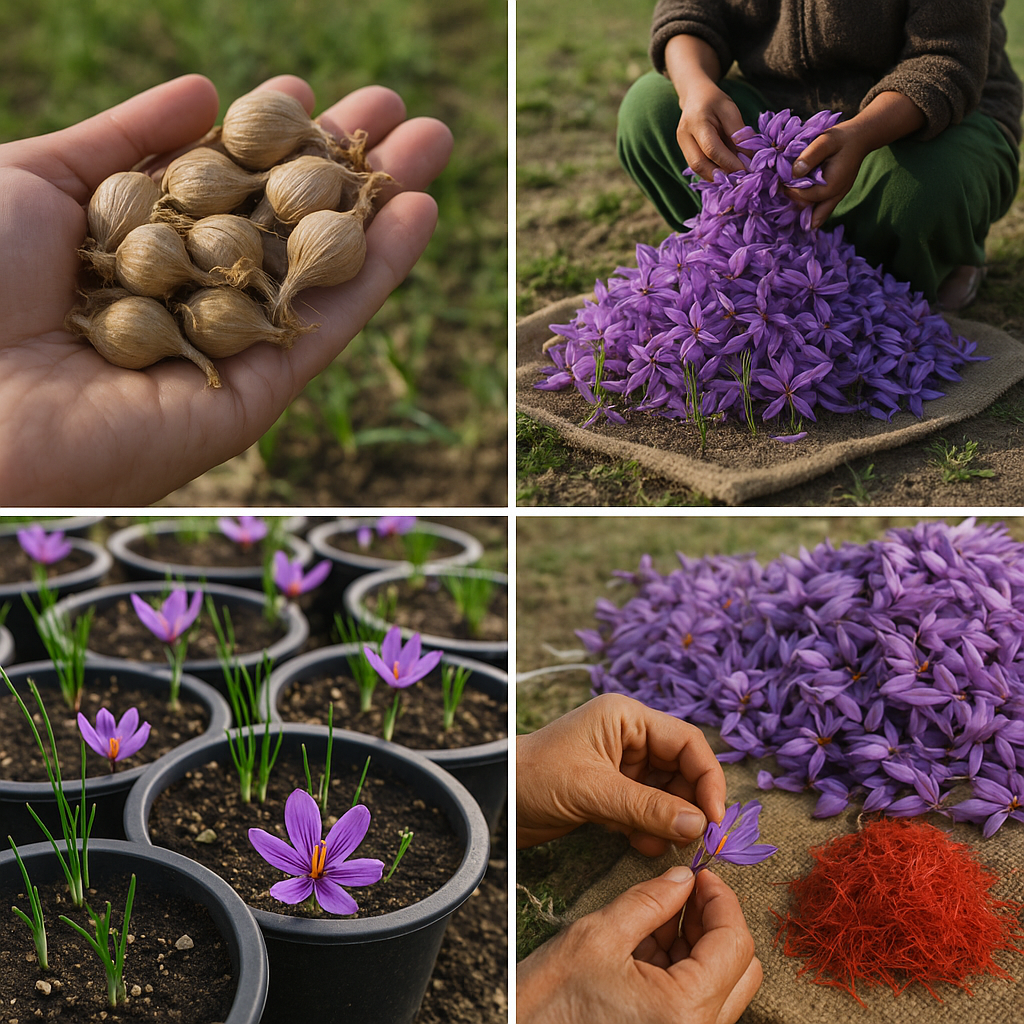
Why Grow Saffron in Containers?
Saffron is ideal for container gardening, especially in cold climates. Containers allow you to control soil conditions, protect corms from freezing, and move plants indoors during harsh winters. *Crocus sativus* is hardy in Zones 6–9 but can be grown in Zones 3–5 with proper overwintering. Plus, saffron’s low space requirements make it perfect for small patios or balconies, and its labor-intensive harvest (150 flowers yield just 1 gram) is manageable for home gardeners seeking fresh, authentic spice.
Step-by-Step Guide to Growing Saffron in Containers
Follow these steps to successfully grow and harvest saffron in containers, even in cold climates.
🌱 Step 1: Choose the Right Corms
Select high-quality *Crocus sativus* corms from reputable suppliers like Fedco Seeds, Renee’s Garden Seeds, or DutchGrown. Avoid spring-blooming crocus or *Colchicum autumnale* (autumn crocus), which are toxic. Opt for corms sized 9/10 or larger (circumference in cm) for better flowering in the first year. Each corm typically produces 1–3 flowers. For a family of four using saffron monthly, plant 50–60 corms to yield about a tablespoon of spice.
🪴 Step 2: Select a Suitable Container
Choose a shallow, wide container (6–8 inches deep, 12 inches wide) with at least two drainage holes to prevent waterlogging, as saffron corms rot in soggy soil. Terracotta or clay pots are ideal for breathability, but plastic milk crates lined with weed cloth work well to deter pests like rodents. For 5–12 corms, a 12-inch pot is sufficient; scale up for more.
🌍 Step 3: Prepare Well-Draining Soil
Saffron thrives in loose, well-draining soil with a pH of 6.0–6.5. Mix equal parts potting soil, coarse sand, and compost or milled peat for optimal drainage. Avoid heavy clay soils, and add a 1–2 inch layer of gravel or sand at the pot’s base to enhance aeration. Amend with organic fertilizer (e.g., 5-10-5) or bone meal before planting to boost flower production.
🌷 Step 4: Plant Corms in Late Summer
Plant corms in late July to early September, 6–8 weeks before the first deep frost (check your region’s frost dates). Place corms 2–3 inches deep, pointed end up, and 3–4 inches apart in clusters of 5–12 for better flowering. If unsure of orientation, plant on their side—roots will adjust. Water lightly after planting to settle the soil, keeping it moist but not wet.
☀️ Step 5: Provide Optimal Growing Conditions
Position containers in a sunny spot with 5–8 hours of direct sunlight daily (DLI of 15+ mol/m²/day). Ideal temperatures are 50–70°F (10–21°C), with a maximum of 90°F. In cold climates, place pots outdoors during fall for blooming, but protect from heavy rain. Use a full-spectrum grow light (e.g., 24W Sansi screw-in bulb) indoors if natural light is insufficient, keeping it 12 inches above plants for 10–12 hours daily. Maintain low humidity (40–50%) to prevent fungal issues.
💧 Step 6: Water and Care During Growth
Water lightly after planting, keeping soil moist but not waterlogged. During the active growth phase (fall to early spring, when leaves and flowers appear), water when the top inch of soil feels dry, typically every 1–2 weeks. Stop watering during summer dormancy (April–September) to mimic saffron’s Mediterranean roots. Apply a high-phosphorus fertilizer (5-10-5) in early spring to support corm development, following label instructions.
❄️ Step 7: Overwintering in Cold Climates
In Zones 3–5, saffron corms won’t survive freezing ground. After blooming (mid-October to November), wait for the first frost but move containers indoors before the soil freezes. Store pots in a cool, dry, dark place (40–50°F, e.g., a garage or basement) without watering. Alternatively, bury pots in a garden bed with the rim 2 inches below soil, then dig up before freezing. Replant outdoors in spring after the last frost, around tomato-planting time.
🌸 Step 8: Harvesting Saffron
Flowers bloom 6–8 weeks after planting, typically October–November. Harvest mid-morning on a sunny day when flowers are fully open and dew has dried. Use tweezers to gently pluck the three red stigmas per flower, or snip entire flowers and remove stigmas indoors. Dry stigmas on a paper towel in a warm, shaded, well-ventilated area for 1–3 days, ensuring they don’t overlap. Store in an airtight container, wrapped in foil to block light, for up to 5 years. Expect 50–60 flowers for 1 tablespoon of saffron.
🌱 Step 9: Post-Harvest Care and Propagation
After blooming, let grass-like leaves grow until they yellow and wither (late spring). Do not cut foliage early, as it nourishes daughter corms for next year’s blooms. During summer dormancy, store pots in a dry, warm place (70–80°F) without watering. Corms multiply annually, producing 1–3 new corms per parent. After 4–6 years, dig up corms in summer, separate healthy ones, and replant or store in a breathable container (e.g., mesh bag) at 40–50°F until fall.
Tips for Success in Cold Climates
🐿️ Protect from Pests
Rodents like mice and squirrels love saffron corms. Use milk crates lined with weed cloth or cover pots with hardware cloth to deter them. Check for saffron mites or thrips during growth, and remove affected corms promptly.
🌡️ Monitor Temperature
Ensure soil temperatures stay above 0°C in winter by overwintering indoors. In fall, maintain 50–70°F for optimal blooming. Avoid humid conditions to prevent rot.
🌱 Choose Larger Corms
Start with corms sized 9/10 or 10/11 for multiple blooms in the first year. Smaller corms (7/8) may not flower initially but will multiply over time.
🧪 Test Soil pH
Use a soil test kit to confirm a pH of 6.0–6.5. Adjust with lime if too acidic or sulfur if too alkaline for optimal nutrient uptake.
Precautions for Safe Growing
🩺 Verify Corm Type
Ensure you’re planting *Crocus sativus*, not toxic *Colchicum autumnale* (autumn crocus), which has similar flowers but is leafless and star-shaped.
🚫 Avoid Overwatering
Excess water, especially during dormancy, causes corm rot. Check soil dryness before watering, and ensure containers have ample drainage.
🐶 Pet Safety
*Crocus sativus* is generally safe, but keep corms out of reach of pets, as ingestion may cause mild digestive upset.
Why Grow Saffron in Containers?
Growing saffron in containers in cold climates is a rewarding endeavor. The ability to move pots indoors protects corms from freezing, while the controlled environment ensures optimal soil and drainage. Each corm multiplies yearly, increasing your yield over time, and the delicate purple blooms add late-season beauty to your space. With just 24–60 corms, you can supply a household with fresh saffron for paella, curries, or teas, saving money compared to store-bought spice, which can cost $5,000 per pound. Plus, the joy of harvesting your own “red gold” is unmatched.
Start Your Saffron Journey Today
🔥 Ready to grow your own saffron and savor its unmatched flavor? *Crocus sativus* in containers is your ticket to a bountiful harvest, even in cold climates. With well-draining soil, careful overwintering, and a sunny spot, you’ll be plucking vibrant stigmas in just 6–8 weeks. Plant this fall, protect your corms through winter, and enjoy the fruits of your labor in dishes that sing with freshness. Order quality corms, grab a pot, and let the shy plant of saffron bloom into your life. Here’s to thriving gardens and golden flavors!

